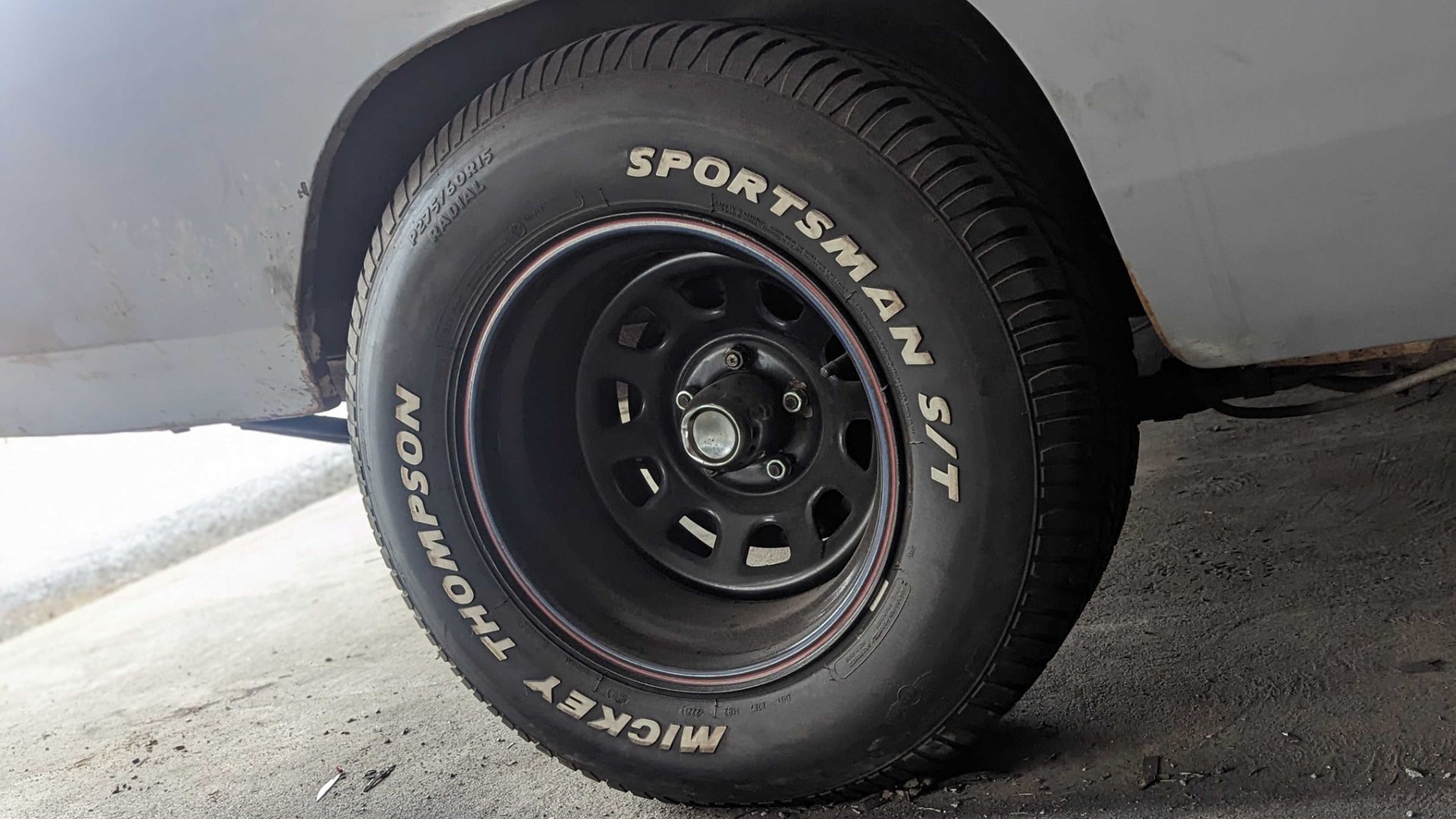

We may earn revenue from the products available on this page and participate in affiliate programs. Learn more ›
You removed your errors in elementary school with pink and blue erasers. And if your high school was anything like mine, every shade of the rainbow flew past your head (if you were lucky) in the form of elastic rubber bands. So, as a gearhead, when I look at cars, motorcycles, and trucks, I wonder why the tires are always black?
Couldn’t automakers spruce them up and add some spice to the scene? Well, no, Goodyear once attempted to make a colored tire to match any occasion but failed. And here’s why.

The rubber that forms the base of your tires’ compound starts life with a milky white color and is made from a mixture of sap from a rubber tree and synthetic rubber. It’s interesting to imagine, but I wouldn’t fancy trying to keep it clean. But aesthetics have nothing to do with the fact that your tires are black by the end of the manufacturing process. The reasoning is far more practical.
In the late 1800s, cars were finding the limits of grip provided by their wooden wheels with a band of iron around the rim. So, in 1895, the rubber tire was born to help lay down the four horsepower most models were putting out around then. Unfortunately, the white tires would get soft and tacky when hot and rigid when cold. Something needed to change.

Tiremakers experimented with various techniques until Sidney Charles Mote and a team of experimenters in England discovered the reinforcing effect that a substance called carbon black adds to rubber in 1904. They learned this by taking soot, which contains carbon black, from different industrial processes and blending it with the rubber mixture, turning it black.
Carbon black is a pigment derived from the incomplete combustion of crude oil or natural gas in a limited-oxygen environment. The process produces fine soot, which is kept in silos at tire plants. Regular soot is no longer necessary, and carbon black is added directly to the manufacturing process. And more than a century later, it’s as important as ever.

Firstly, adding carbon black to the rubber mix helps to stabilize more than 20 chemical compounds in tire rubber. These chemicals help to ensure tires stay flexible and provide strength under load. But the benefits you notice daily are improved performance and longevity.
Have you ever found an elastic band on the ground during the summer? The slightest stretch, and it snaps. Carbon black protects tires from harmful UV rays that cause the rubber to become brittle and disintegrate. We don’t want our tires to be too hard, as it decreases performance, but in the same vein, we don’t want them to get too hot.

When your tires get too hot, performance drops, but more importantly, their lifespan decreases tremendously. You don’t need to tear around a race track to get your tires hot around the tread and belt areas, as regular highway driving on a hot day is more than enough. The carbon black in your tires works to disperse and not trap the heat generated while driving. Without it, the wear-and-tear would guarantee you’d be replacing your rubber at a financially alarming rate.
In short, carbon black keeps tires performing better for longer and, as a byproduct, turns them black. And, honestly, would you want them in any other color?
More from The Drive
- Rob Stumpf dug up a hack that lets you change traffic lights (don’t do it, though)
- James Gilboy drove the new 2023 Chevrolet Colorado, and I have a lot to say about it
- This year’s Daytona 500 brought pride to the humble dirt racers of America
- Glickenaus is furious that his hypercar isn’t being allowed to go racing in IMSA
- Ram 1500 REV reservations dried up in a jiffy